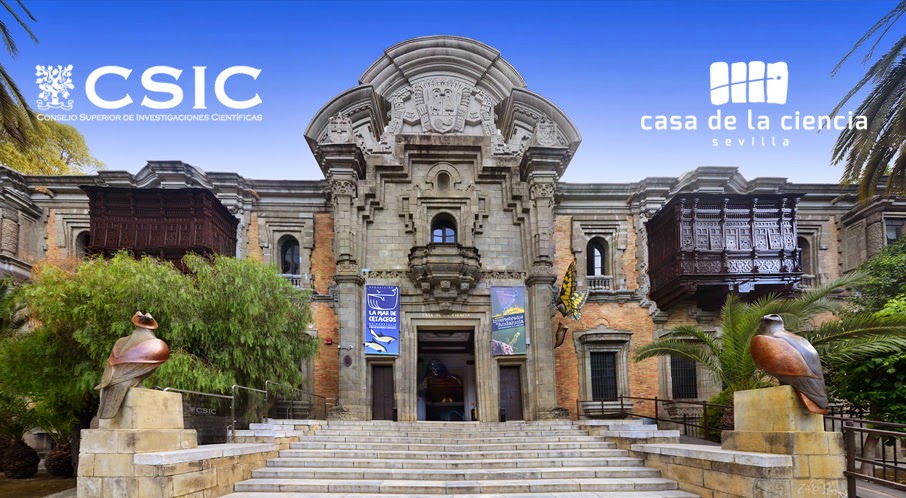Looks very well for his 41
years, from Madrid, by adoption from Malaga, jokes with everyone, big eyes,
T-shirt and jeans forever ... We speak, of course, about our José Antonio. He
is responsible for all the graphic design and illustration of the Museum.
You can find him sitting in the front of his huge Mac (essential for a graphic designer), dropping jokes
between lines and color palette. Almost 7 years ago he left his steady job in
Malaga for a temporal contract with Cultural Scientific Union in Doñana Biological
Station in Matalascañas, Huelva. And here it is where he continued after La
Casa de la Ciencia was founded.
What is that you like the most
about working here? “Well, until the lift was installed my favorite thing was
to load furniture (laughs). No, in all honesty, I like creative freedom. Sure,
there are times of stress and hectic work when we put temporal exhibitions up. But
I deal with it well.”
Next question… "And what
I dislike is putting so much excitement in my work daily for later to have some
visitors who do not respect the Museum. We have some vandalism cases. But they
are a small minority, obviously."
The workspace of José Antonio
is only separated by a thin wall from the children that are exploring
“Invertebrates of Andalusia” exhibition. “The noise does not bother me. I like
to hear that there is a life in the Museum. I hope to stay here the maximum
time possible with my favorite colleagues: Erika and Yolanda” (laughs).
But for our main character, there is more life out there apart from the Casa de la Ciencia. He likes a lot to
paint in watercolor and oil. His favorite subjects? Landscape and birds. We
have some evidence of that as you can see.
He also loves travelling, but
this will surprise you: he does not mention the typical tourist places (Prague,
Rome, Paris…) rather Bolivia or those two weeks that he spent in Arctic. “It
was freezing as hell. “In summer, the medium temperature was -1oC. But his favorite place on earth of
course is Doñana.
The big chef in his house.
What do you like to cook? “Let me think… beans with ham, rustic, right? I like
to cook all kinds of rice; also can cook sushi, even though my most recent
Discovery is ceviche. ” I was in Huelva last weekend and bought whole kilogram
of sea bass. With that you can make ceviche and also marinated sea bass. Would
you like to know the recipe?
Marinated ceviche. Recipe by Sencianes (José Antonio)
- Cut the sea bass into irregular pieces with a sharp knife and not necessarily very thin. Any white fish that has a consistent meat will do, such as grouper or monkfish.
- Put the fish in the bowl and soak it with the juice of limes or lemons.
- Add hot pepper and mix it all by using hands.
- Then cover the bowl with transparent wrap and put it in the fridge for 15-25 minutes. The longer you keep it the tenderer it will become.
- Serve it on the plate without taking out the lemon juice, with plenty of fresh red onions (important that it is red) cut in thin slices and add fresh chopped coriander. You can also put a little bit of olive oil. In Peru it is also often served with corn.
Delicious!









